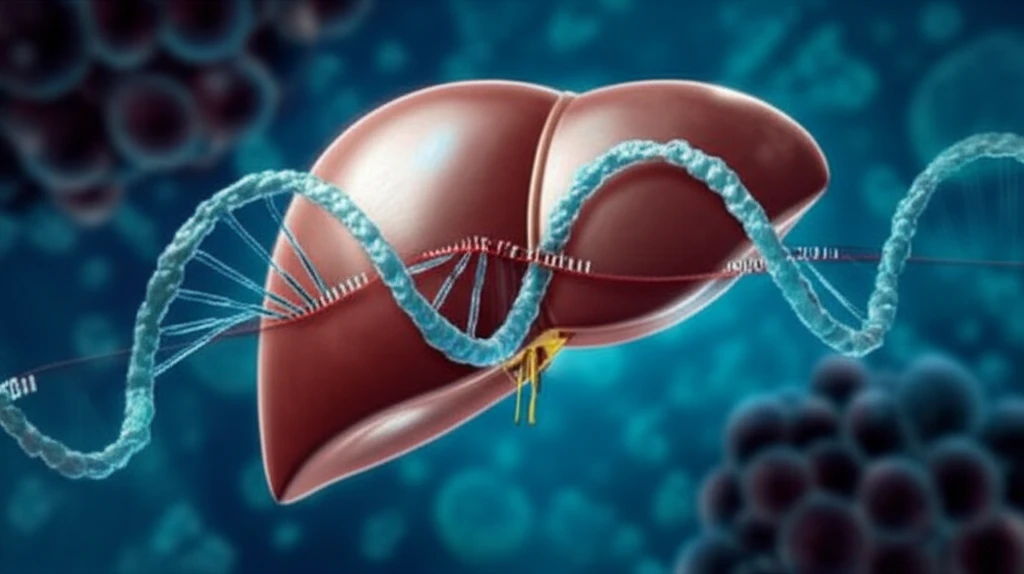
Decoding Liver Cancer: How Genetic Silencing Fuels Tumor Growth
"A breakthrough study reveals how a specific genetic mutation drives the aggressive behavior of hepatocellular carcinoma, offering new hope for targeted therapies."
Hepatocellular carcinoma (HCC), a prevalent form of liver cancer, stands as a significant contributor to cancer-related fatalities worldwide. While treatments like liver resection and transplantation offer potential cures, their applicability is limited, and recurrence rates remain high. Understanding the underlying molecular mechanisms that drive HCC is critical for developing more effective therapies.
Cancer stem cells (CSCs) are increasingly recognized for their role in tumor initiation, metastasis, and resistance to chemotherapy. In HCC, various biomarkers such as EpCAM, CD133, CD90, CD44, and CD24 are used to identify and isolate these CSCs. Despite the identification of these markers, the complex interplay and shared molecular characteristics between different CSC populations within HCC remain poorly understood.
Recent research has focused on microRNAs (miRNAs), small non-coding RNA molecules that regulate gene expression and are implicated in both normal stem cell function and cancer development. A new study sheds light on the critical role of miR-192-5p, a liver-specific miRNA, in HCC. By investigating how the silencing of miR-192-5p contributes to the development of cancer stem cell features, this research provides valuable insights into potential therapeutic targets for HCC.
The Silencing of miR-192-5p: A Key Driver in HCC Development

The study, utilizing miRNA profiling in a cohort of HCC patients, identified a 14-miRNA signature commonly altered across various CSC+ HCC tissues. Among these, miR-192-5p emerged as a top candidate. It was found to be markedly downregulated in CSC+ HCC samples compared to non-CSC HCC samples. This downregulation was consistently observed across five different CSC groups (EpCAM+, CD90+, CD133+, CD44+, and CD24+), indicating a shared mechanism driving cancer stem cell characteristics.
- Downregulation in CSC+ HCC: MiR-192-5p is significantly less abundant in cancer stem cells within liver tumors.
- Increased CSC Features: When miR-192-5p is suppressed, liver cancer cells exhibit more stem-cell like characteristics.
- PABPC4 Targeting: MiR-192-5p exerts its influence by targeting PABPC4, a key protein in mRNA translation.
- TP53 and Methylation: Genetic mutations (TP53) and promoter hyper-methylation contribute to the silencing of miR-192-5p.
Implications for Future HCC Therapies
This research highlights the significance of miR-192-5p as a critical regulator of cancer stem cell features in HCC. The discovery of this shared genetic regulatory pathway opens new avenues for developing targeted therapies that can disrupt the process of liver carcinogenesis.
One potential therapeutic strategy involves restoring miR-192-5p expression in HCC cells. By delivering miR-192-5p to the liver, it may be possible to inhibit hepatic CSC features and reduce tumor growth. This approach has the potential to be less toxic than traditional chemotherapy due to the liver's natural abundance of miR-192-5p.
Further research is needed to fully understand the role of miR-192-5p in HCC development and to explore the therapeutic potential of targeting this pathway. Future studies could investigate the timing of miR-192-5p methylation and the interplay with TP53 mutations in the early stages of HCC development. These insights will pave the way for more effective strategies to diagnose, prevent, and treat this deadly disease.
